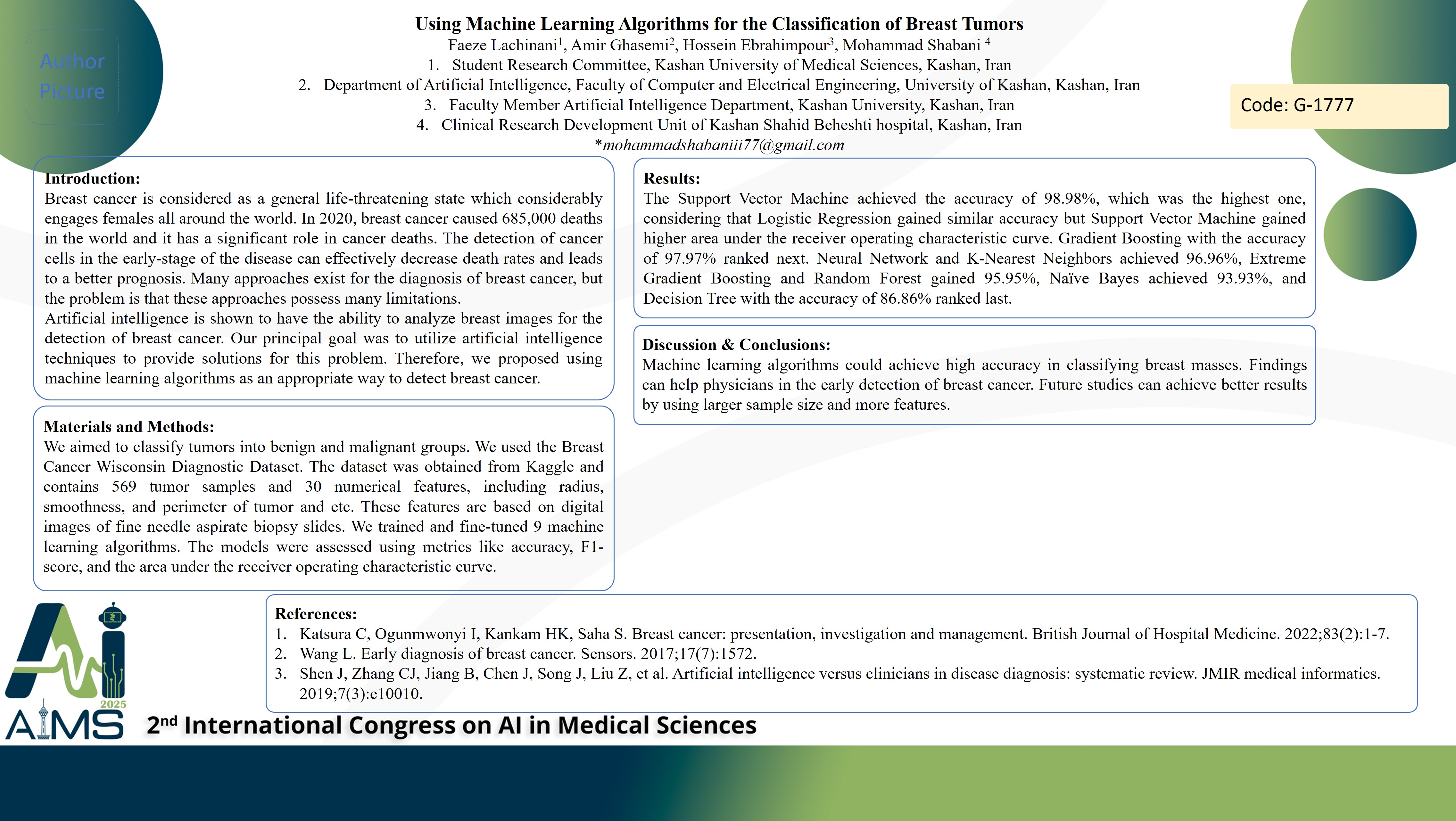کاربرد الگوریتم های یادگیری ماشینی در طبقه بندی تومور های پستان
کد: G-1777
نویسندگان: Faeze Lachinani ℗, Amir Ghasemi, Hossein Ebrahimpour, Mohammad Shabani *
زمان بندی: زمان بندی نشده!
برچسب: تشخیص و درمان سرطان
دانلود: دانلود پوستر
خلاصه مقاله:
خلاصه مقاله
Background and aims: Breast cancer is considered as a general life-threatening state which considerably engages females all around the world. In 2020, breast cancer caused 685,000 deaths in the world and it has a significant role in cancer deaths. The detection of cancer cells in the early-stage of the disease can effectively decrease death rates and leads to a better prognosis. Many approaches exist for the diagnosis of breast cancer, but the problem is that these approaches possess many limitations. Artificial intelligence is shown to have the ability to analyze breast images for the detection of breast cancer. Our principal goal was to utilize artificial intelligence techniques to provide solutions for this problem. Therefore, we proposed using machine learning algorithms as an appropriate way to detect breast cancer. Method: We aimed to classify tumors into benign and malignant groups. We used the Breast Cancer Wisconsin Diagnostic Dataset. The dataset was obtained from Kaggle and contains 569 tumor samples and 30 numerical features, including radius, smoothness, and perimeter of tumor and etc. These features are based on digital images of fine needle aspirate biopsy slides. We trained and fine-tuned 9 machine learning algorithms. The models were assessed using metrics like accuracy, F1-score, and the area under the receiver operating characteristic curve. Results: The Support Vector Machine achieved the accuracy of 98.98%, which was the highest one, considering that Logistic Regression gained similar accuracy but Support Vector Machine gained higher area under the receiver operating characteristic curve. Gradient Boosting with the accuracy of 97.97% ranked next. Neural Network and K-Nearest Neighbors achieved 96.96%, Extreme Gradient Boosting and Random Forest gained 95.95%, Naïve Bayes achieved 93.93%, and Decision Tree with the accuracy of 86.86% ranked last. Conclusion: Machine learning algorithms could achieve high accuracy in classifying breast masses. Findings can help physicians in the early detection of breast cancer. Future studies can achieve better results by using larger sample size and more features.
کلمات کلیدی
Breastcancerdiagnosis, Machinelearning, Earlydetection, Classification
